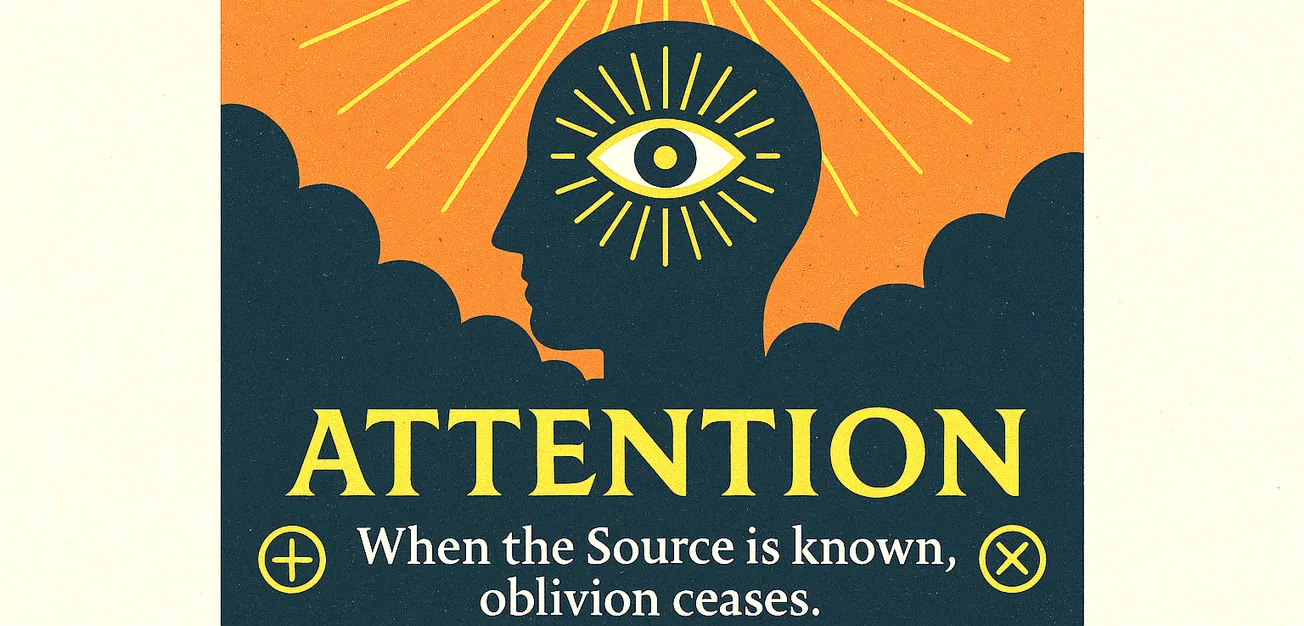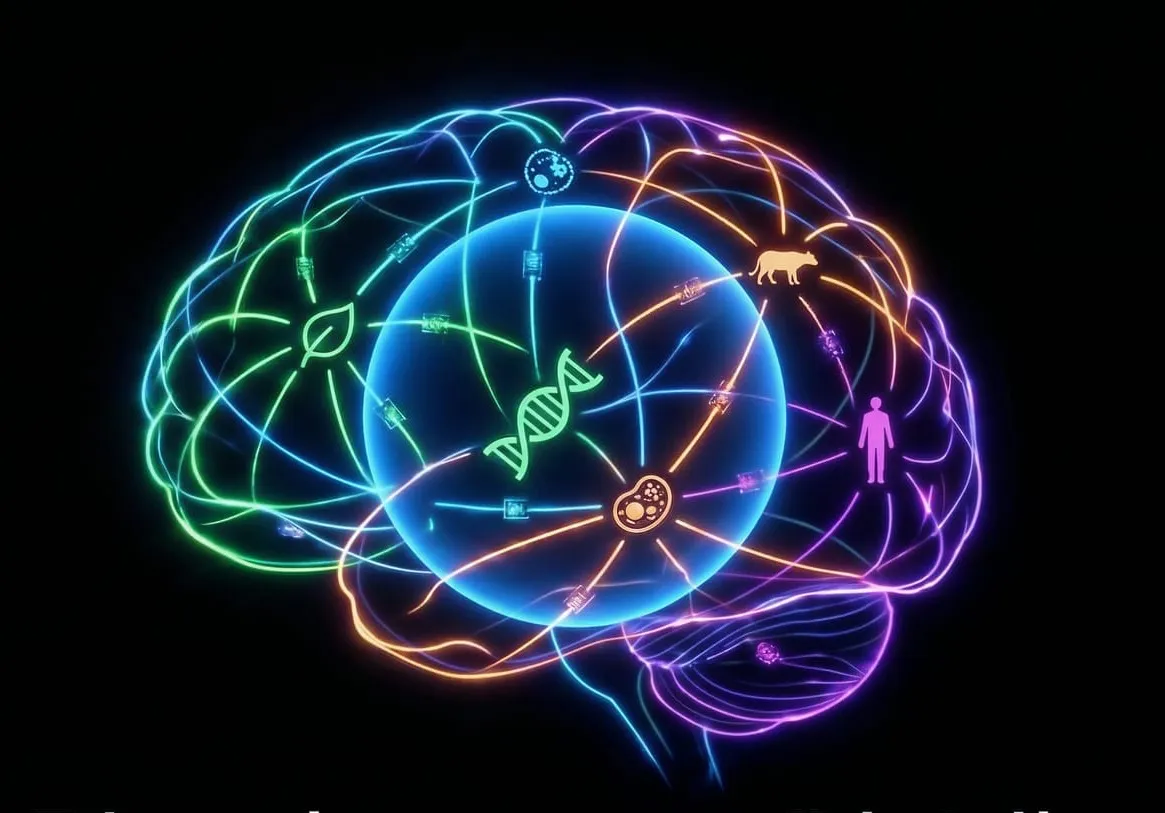When the Source is known, oblivion ceases. Everything else—archons, fates, seals, garments—is practical elaboration of that claim.
In a world where "Attention" is the scarcest good, such gnōsis is not archaic mysticism; it is existential method.
The 1945 discovery near Nag Hammadi of 13 Coptic codices—containing Christian, “Gnostic,” Hermetic, and even Platonic materials—reshaped the study of early Mediterranean religion. This essay synthesizes philological, historical, and philosophical analysis to clarify what Nag Hammadi texts actually claim about “hidden knowledge” (gnōsis), “archons,” and liberation. I argue that: (1) the library is a deliberately curated late-antique monastic collection, not a random cache; (2) the Apocryphon of John supplies the clearest Sethian myth-grammar of archontic rule as cosmic, political, and psychological governance; (3) core soteriology is not world-denial but the reversal of oblivion by knowing—“forgetfulness” dissolves when the Father is known; (4) ritual technologies (the “five seals,” “bridal chamber”) and ascetic-introspective practices implement that knowing; and (5) modern claims that “archons feed on fear” overshoot the sources, though late Coptic texts do speak of rulers capturing and diverting “light-power.” The conclusion reframes “hidden knowledge” as a disciplined, verifiable phenomenology of attention rather than a secret data hoard. (Wikipedia, PagePlace, Gnosis, Brill)
1) How the library came to be—and why that origin matters
What was found? Twelve complete leather-bound papyrus codices and a tractate from a thirteenth, copied in Coptic (mostly 4th c. CE) and buried near modern Nag Hammadi. Contents include 50+ tractates: Christian sermons and dialogues, Sethian and Valentinian treatises, three Hermetic works, and a Coptic excerpt of Plato’s Republic. This diversity matters: it places “gnostic” speculation inside a broader late-antique curriculum. (Wikipedia, Groningen Research Portal, Gnosis)
Provenance. The older “heretics hide books from orthodox burners” story is too simple. A strong scholarly current (Lundhaug, Jenott; Linjamaa) argues the codices were produced, used, and deposited in Pachomian monastic settings—in other words, copied by monks engaging with a remarkable range of speculative literature. The hypothesis builds on codicological features and colophons rather than ideology. It does not deny later polemics like Athanasius’ Festal Letter 39 (367 CE), but it reframes burial as a monastic library practice amid changing reading regimes, not mere flight. (PagePlace, OAPEN Library, cdn.mohrsiebeck.com, New Advent)
Implication. “Hidden” here is not (only) secrecy; it is also curricular selectivity: advanced readings for advanced readers. The Nag Hammadi codices are an intentional anthology of techniques—mythic, ritual, contemplative—for re-educating perception.
2) What “hidden knowledge” means in these texts
“Gnosis” is not trivia. It is recognition: a transformative “knowing-with” the divine source that undoes error. The Gospel of Truth states it with lapidary economy: “Since oblivion came into existence because the Father was not known, then if the Father comes to be known, oblivion will not exist from that moment on.” The text makes “forgetfulness” the imprisoning medium and “knowing” its dissolvent. (Gnosis)
Similarly, Thomas ties salvation to self-knowledge as recognition: “The kingdom is inside of you and it is outside of you… When you know yourselves, then you will be known.” And, “If you bring forth what is within you, what you bring forth will save you.” These aren’t slogans; they’re method. They ground the practical project: train attention to see through imposed narratives. (Gnosis, Early Christian Writings)
3) The archontic machine: cosmology as a grammar of control
The Apocryphon of John (our most programmatic Sethian myth) narrates how ignorance (aponoia) births a blind craftsman, Yaldabaoth—“lion-faced” and serpentine—who fabricates a cosmos and installs rulers (archontes). He assigns seven planetary authorities and twelve further “authorities,” configuring a cosmos of spheres, fate, and administrative powers; from their combinatorics emerge 365 “demons,” mapping a totalized time-regime. The chief ruler proclaims, “I am God and there is no God but me”—the primal confusion of derivative power with source. (ICDST E-print Archive)
Scholars read those numbers against Hellenistic astrology and civic administration. The seven match the “wandering stars” (planetary spheres), the twelve align with zodiacal organization, and the 365 figure the day-year; some systems include decans and monomoiria. The point is not numerology but governance: fate (heimarmene) as bureaucratic technology. (Academia)
Two further features locate this myth in late-antique intellectual life:
- Platonic and Hermetic intertexts. NHC VI also contains a Coptic excerpt from Republic 588–589 (on the tyrant’s soul) and three Hermetic tractates (Discourse on the Eighth and Ninth, Prayer of Thanksgiving, Asclepius). The collection thus juxtaposes Christian soteriology with Platonic-Hermetic ascent pedagogy—evidence of a shared “technology of the self.” (Brill, Gnosis, Gnosis)
- Valentinian systematic alternatives. The Tripartite Tractate offers a different, highly architected soteriology where error is deficiency (hysterēma), not equal-and-opposite evil—a nuanced monism rather than dualistic stalemate. (Gnosis, St Andrews Research Repository)
4) The invisible prison named: oblivion, sleep, garment
Nag Hammadi authors are precise about the instrument of capture: forgetfulness. Gospel of Truth construes “oblivion” as a derivative pseudo-power with no root in the Father—real only while unrecognized. Knowing makes it vanish. (Gnosis)
The Apocryphon of John reinterprets Adam’s “deep sleep” as an induced forgetfulness: the rulers “made Adam forget the knowledge granted him” so that he would not exercise Epinoia (creative insight). In short: dull the attention, and you can steer the soul. (ICDST E-print Archive)
Elsewhere the trap is a garment metaphor—habits, scripts, and social selves worn like clothes. Thomas images liberation as stripping off those garments “without shame,” and Teachings of Silvanus urges: “Depart from the forgetfulness which fills you with darkness.” The metaphors are pedagogical: see the garment as garment. (Early Christian Writings, Gnosis)
5) Practices that undo the trap
The texts do not stop at cosmology. They prescribe methods.
- Introspective recognition. Thomas locutions (“know yourself”; “bring forth what is within”) recommend watchfulness: track the next thought as arrival rather than identity; return attention to the “place” before the thought. (This has ancient analogs across Hellenistic asceses.) (Gnosis, Early Christian Writings)
- Ritual technologies. Sethian sources witness a baptismal complex known as the Five Seals—a multi-stage immersions/anointings/power-namings sequence that “seals” the practitioner against archontic interception and effects heavenly ascent. The rite is alluded to in Apocryphon of John (long recension), Trimorphic Protennoia, and the Holy Book of the Great Invisible Spirit; scholarship reconstructs its steps from scattered formulae. (Brill)Valentinian circles emphasize a different sacramental climax: the Bridal Chamber (Gospel of Philip)—not sex magic but theophanic union imagery indexing reintegration into the Pleroma. Both complexes ritualize the same epistemic pivot: stable recognition in place of forgetfulness. (Gnosis)
- Counter-astrology. Late Coptic materials show Christ “turning the sphere and fate,” disabling archontic prediction and control. This dramatizes a metaphysical claim: gnosis interrupts deterministic capture. (pseudepigrapha.com)
6) Are the archons “real”? Three compatible readings
(a) Mythic-cosmic. The texts treat archons as ruler-powers inhabiting planetary zones who obstruct ascent (e.g., Hypostasis of the Archons). Salvation then includes correct passwords/names and seals to bypass their stations. (Gnosis)
(b) Political-historical. “Archon” is a Greek term for magistrate. Paul’s “archons of this age” already moralizes governance. Nag Hammadi authors structure myth as critique of empire, law, and social hegemony: an allegory of how institutions claim absolute ultimacy (“I am God…”) while forgetting their derivation from higher goods. (The proximity of Platonic tyrannos discourse in NHC VI is not incidental.) (Gnosis)
(c) Psychological-cognitive. The texts’ obsession with attention (Epinoia), oblivion, and “garments” anticipates modern accounts of how predictive minds, incentives, and media ecologies capture salience. While we should avoid anachronism, the family resemblance is precise: change the lens, change the world you see. That is their axiom.
The three readings are not exclusive. In late antiquity, cosmic, civic, and psychic orders interpenetrated. The “hidden knowledge” consists in seeing the structural isomorphism and declining consent.
7) Sorting sources from speculation: do archons “feed on fear”?
What Nag Hammadi says. In the Apocryphon of John, the rulers siphon power by embedding the divine spark in a managed system of spheres, names, and times; they multiply “authorities” and “demons”—but the decisive lever is ignorance. Their world persists because we don’t recognize the Source. (ICDST E-print Archive)
What later Coptic says. The Pistis Sophia (not from Nag Hammadi) depicts rulers extracting light and Christ/Melchizedek reclaiming it; it also vividly narrates fate and the astral machine being turned against itself. This is the closest ancient analogue to modern “energy-harvesting” language. Even here, what is “consumed” is misdirected light, not emotions per se. (pseudepigrapha.com)
Bottom line. Claims that archons “feed on fear” oversimplify the sources. The textual spine is epistemic: forgetfulness empowers the rulers; recognition deprives them of purchase. When present, parasitic imagery is a figure for that epistemic dependency. (Gnosis)
8) The female divine and the pedagogy of inversion
Across treatises, Sophia and her emanations (Barbelo, Epinoia, Thunder, Perfect Mind) stage the drama of error and remedy. Thunder speaks in paradoxes—“I am the honored and the scorned”—training readers to endure cognitive inversion until a non-dual recognition dawns. The point is not paradox for paradox’s sake; it’s a performative therapy of attention. (Gnosis)
Texts like Hypostasis tell stories where Eve and Norea confound the rulers—Norea even burns Noah’s ark when excluded, then receives revelation from Eleleth. The pedagogical sting: archontic power falters where a feminine hypostasis sees through it. (Gnosis)
9) What freedom looks like in practice (a compact field guide)
- Name the machine. Learn its architecture—spheres, times, authorities, passwords, rituals—as models of capture. Study Apocryphon of John and Hypostasis as grammars of governance. They teach you to recognize rule by forgetfulness. (ICDST E-print Archive, Gnosis)
- Train attention. Adopt the Thomasine protocol: know yourself; bring forth what is within; strip the garment. Insert micro-pauses that mark thoughts as arrivals. This is not quietism; it is jurisdictional: reclaim your attention from outsourced scripts. (Gnosis, Early Christian Writings)
- Ritualize recognition. Whether one practices historically-inspired rites (five seals; bridal chamber) or their functional equivalents (vows, anointings, renamings), the point is sealing: consolidate the insight so it is repeatable under pressure. (Brill, Gnosis)
- Live the inversion. Let paradox be pedagogue: where institutions absolutize themselves, remember their derivation. Where a thought claims ultimacy, test its origin. This is the psychology of “passing the archons.”
10) Known unknowns and genuine research frontiers
- Monastic curation. If Pachomian monks compiled these volumes, what pedagogical sequences did they intend? Work on colophons and scribal habits (Lundhaug, Jenott, Lied/Linjamaa) suggests purposeful clustering (e.g., pairing Hermetica and Plato with Christian ascent texts). A fuller prosopography of copyists may reveal study cycles. (cdn.mohrsiebeck.com, PagePlace)
- Astro-administrative mapping. The 7–12–365 scheme likely indexes a whole typology of decans and degree-lords. Recent work correlates Apocryphon of John with Hellenistic astrology (monomoiria; decans). A synoptic chart across NHC witnesses remains a desideratum. (Academia)
- Ritual reconstruction. The five seals corpus is still being reconstructed from scattered allusions. A critical edition of all formulae (across Ap. John, Trimorphic Protennoia, Gospel of the Egyptians) with comparative baptismal liturgies could move us from conjecture to typology. (Brill)
- Genre and pedagogy. Thunder, Perfect Mind and the Valentinian Gospel of Truth function as performative texts—exercises in attention. How precisely did ancient readers “use” them? Reception-histories in monastic settings are underdeveloped. (cswr.hds.harvard.edu)
11) “Hidden knowledge” without mystification
Two scholarly cautions sharpen our reading:
Michael A. Williams and Karen L. King both warn that “Gnosticism” is a modern umbrella that can obscure diversity. We can speak of Sethian networks, Valentinian schools, etc., rather than a single monolith. That caution doesn’t collapse the category; it refines it. (Gnosis Study)
David Brakke proposes a historically bounded “The Gnostics” while respecting internal plurality. Applying these cautions to Nag Hammadi helps us avoid importing later occultisms into fourth-century Coptic pages. (Gnosis Study)
Conclusion: Freedom as disciplined remembering
The Nag Hammadi writers did not promise escape by force. They diagnosed oblivion as the substrate of capture and recognition as the solvent. Their myths map the machine; their rituals and sayings train attention; their paradoxes harden the resolve to inhabit truth without outsourcing perception.
If one sentence distills their “hidden knowledge,” it is the Gospel of Truth’s axiom: when the Source is known, oblivion ceases. Everything else—archons, fates, seals, garments—is practical elaboration of that claim. In a world where attention is the scarcest good, such gnōsis is not archaic mysticism; it is existential method. (Gnosis)
Select primary and scholarly references (indicative, not exhaustive)
- Apocryphon (Secret Book) of John: cosmology of archons, 7–12–365 schema, oblivion/sleep; long-recension Coptic with commentary. (ICDST E-print Archive)
- Gospel of Truth: “oblivion” dissolves when the Father is known. (Gnosis)
- Gospel of Thomas (sayings 3, 37, 70): kingdom within/without, self-knowledge, bringing forth what is within. (Gnosis, Early Christian Writings)
- Hypostasis of the Archons (Reality of the Rulers): archontic governance, Norea narrative. (Gnosis, Gnosis)
- On the Origin of the World: parallel cosmology; complements Hypostasis. (Gnosis)
- Thunder, Perfect Mind: paradox as pedagogy. (Gnosis)
- Hermetic tractates in NHC VI; and the Coptic excerpt of Plato’s Republic. (Gnosis, Gnosis)
- Five Seals (baptismal complex) and ritual scholarship. (Brill)
- Monastic origin scholarship: Lundhaug & Jenott; Lied/Linjamaa. (PagePlace, cdn.mohrsiebeck.com)
- Category cautions: Williams, Rethinking “Gnosticism”; King, What is Gnosticism?; Brakke, The Gnostics. (Gnosis Study)
Appendix: what this does not claim
- It does not read the texts as conspiracy exposés. Their method is epistemic and ascetical.
- It does not deny that later Coptic traditions (e.g., Pistis Sophia) dramatize rulers “taking light”—but even there, the logic remains: regain what was misallocated by ignorance. (pseudepigrapha.com)
To seek “eternal, significant, meaningful truths” in Nag Hammadi is to practice attention until reality is no longer outsourced. The freedom these books teach is not a reward at the end; it is the disciplined remembrance by which each next thought stops being your jailer and becomes your messenger.



